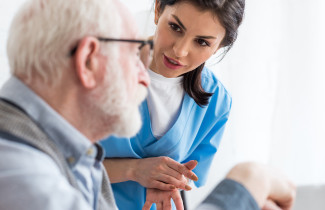Obese women have an increased risk of hip fracture earlier than others, already well before the age of 70, a new study from the University of Eastern Finland shows. The study followed 12,715 women for a period of 25 years. The new findings from the Osteoporosis Risk Factor and Prevention (OSTPRE) study were published in Osteoporosis International.
Launched at the University of Eastern Finland in 1989, the OSTPRE study is a population-based cohort study that recruited all women born in Kuopio Province, Eastern Finland, between 1932 and 1941. In the 25-year follow-up, the researchers analysed the association of body mass index (BMI) at the age of 58 with the risk of early hip fracture up until the age of 70. They also analysed the association of body mass index at the age of 70 with the risk of hip fracture later in life, up until the age of 83. The risk of hip fracture was examined in groups of normal-weight, overweight and obese women. Data on hip fractures, mechanisms of injury, and mortality were obtained from national health registers.
Normal weight was defined as a BMI of 25 or less, overweight as a BMI of 25–29.9, and obesity as a BMI of 30 or over (kg/m2). At baseline, 39.6 per cent of the women were normal-weight, 40 per cent were overweight, and 19.9 per cent were obese. A small fraction of the women (n=59, 0.5%) had a BMI below the normal range, i.e. less than 18.5 kg/m2. Ageing was associated with some increase in the BMI: at 70 years of age, 33.4% of the women were normal-weight, 40.9% were overweight, and 25.7% were obese.
As expected, the risk of hip fracture increased with age in all of the groups; however, the risk of early hip fracture increased faster in obese women, and slower in overweight women, than in others. In obese women, the probability of hip fracture was at 1% already at the age of 66.7, while in overweight women the 1% probability was reached 5.1 years later, at the age of 71.8. Obese women had a 2% probability of hip fracture 2.1 years earlier than overweight women, and a 4% probability 1.3 years earlier. The differences between the groups became smaller with ageing.
In obese women, hip fracture related mortality in five years after the incident was approximately 1.5 times higher than in others.
After around 75 years of age, the risk of hip fracture increased fastest in slender women whose BMI was at the lower end of normal weight. Women at the borderline between normal weight and overweight had the smallest risk all the way until old age.
The study also included a DXA bone density measurement of the hip and a related follow-up of a sub-sample of 3,136 women. At baseline, obese women had on average the highest bone density, but their bone loss was significantly faster than in others. Indeed, obese women in the lowest bone density tertile at baseline had a particularly high risk of hip fracture.
Some earlier studies have suggested that obesity could also be a factor that protects against hip fracture. However, the contradictory findings on the association of BMI with hip fracture seem to be dependent on which age group is being studied. Typically, follow-up times have been significantly shorter than those in the OSTPRE study.
“Based on this study, the risk of early hip fracture occurring before the age of 70 is clearly highest in obese women – and especially in obese women who have a below-average bone density. Later, after around 75 years of age, the risk increases fastest in slender women. Ageing women at the borderline between normal weight and overweight seem to have the lowest risk,” Senior Researcher Toni Rikkonen from the University of Eastern Finland says.
For further information, please contact:
Senior Researcher, Docent Toni Rikkonen, [email protected], tel. +358504752356, https://uefconnect.uef.fi/en/person/toni.rikkonen/
Research article:
Rikkonen, T., Sund, R., Sirola, J. et al. Obesity is associated with early hip fracture risk in postmenopausal women: a 25-year follow-up. Osteoporos Int (2020). https://link.springer.com/article/10.1007/s00198-020-05665-w



